“What did it eat?” I hollered.
Across the lake, my fishing buddy Pat yelled back, “Red chironomid. Again.”
I set my rod across my lap and unzipped a pouch on my float tube. It was a brilliant spring day, warmer than it had any right to be, and Pat and I were on my favorite high country lake a full month earlier than I’ve ever been before. Usually snow blocks the road until the first week of June. We were floating it before Mother’s Day.
The fly boxes I pulled from my float tube pouches were a mess – as all my fly boxes are – and I quickly saw I was out of red chironomids. I had green, black, pink, brown, copper, purple, and infinite combinations of those colors, but no reds anywhere.
We all have this experience while on the water – searching through a fly box in vain for that one size of that special pattern that we need right now. When I started fly fishing, my boxes looked like the bins at my local fly shop. I grabbed fistfuls of every fly, convinced that I’d need a purple extended-body mayfly dun imitation in size 12 at some point.
In the last few years, my approach has changed. I started tying my own flies six or seven years ago, and when my dad’s old fishing vest finally fell apart and I bought a new one, I realized how sick I was of carrying a dozen fly boxes every time I went fishing. The boxes I ditched were the ones full of flies that hadn’t ever seen water – the garish nymphs more likely to scare a trout than catch it, the out-of-proportion bushy dry flies tied to catch the angler and not the fish.
What was left is what I largely fish with today. While it’s certainly not necessary to pare down your fly selection as much as I have, there’s an allure to fishing with only a handful of bugs in your pocket. It forces you to rely on reading water and presentation. In some ways, going with just a few different flies is as solid a way as any to improve as an angler. In most cases, I believe it’s how a fly is fished – and not the fly itself – that puts trout in the net.
That line of thinking invariably leads to the question of what flies I’d fish if I could only have a certain number of patterns at any given moment. Bear in mind that I live and fish in Utah, and I’ve never trout-fished east of the Black Hills. That said, based on my conversations with friends from eastern reaches, chances are these 5 flies will serve you well virtually anywhere you chase trout.

Parachute Adams
I tie more parachute-style flies than any other dry fly. They’re indispensable, especially the Adams. It looks an awful lot like tons of other aquatic insects, and you can confidently fish it during everything from a Yellow Sally hatch to a caddis hatch.
I go with a size 14 here because I almost always fish a three-fly rig (where it’s legal) and a size 14 parachute does a great job of holding up all my other flies.
The dry-dropper-dropper setup is fun – and effective – to fish because it lets you hit different areas of the water column simultaneously. With each cast, you’re putting your flies in front of more fish, and casting three flies really isn’t any more difficult than casting two.

Hare’s Ear
Any Hare’s Ear will do, but I tie mine a bit differently than most. I use coq-de-leon for the tail, natural rabbit dubbing for the body, and a combination of brown holo-tinsel dubbing and pheasant tail for the thorax and wing case, respectively. And, I like tying these with black tungsten beads on curved nymph hooks.
The Hare’s Ear is such a versatile fly because it looks like nearly every mayfly nymph I’ve ever seen. A size 16 is perfect for dropping below a size 14 dry fly, and I try to always have a dozen of these in my box at any given moment.

Frenchie
The Frenchie is to caddis nymphs and larvae what the Hare’s Ear is to mayflies. The Frenchie looks like a cased caddis, or a caddis emerging from its shuck, or even a really dark mayfly nymph. The hotspot collar is, I think, one of the few instances where color has a measurable impact on a fly’s efficacy, and these flies are surprisingly simple to tie. I don’t do anything different to mine, except that I often don’t use any UV resin to lock my thread in place. I prefer superglue.

Black Zebra Midge
The majority of a trout’s diet is found beneath the river’s surface, which is why I only have one dry fly on this list, and we’re now to the third nymph pattern. I go with a black zebra midge here because I’ve found that the more neutral colors tend to produce the best. Red, pink, green, and brown zebra midges work great – but not as effectively as a black one, in my experience. Size 18 is perfect for these bugs, and anyone can tie them. They’re simple, and I’d bet that more fish have been caught on some sort of zebra midge-style pattern than any other nymph.

Black Bunny Leech
I couldn’t do this list without including at least one streamer. I’ve been lucky to learn the ins and outs of streamer fishing from some of the most knowledgeable guides this side of the Mississippi, and the lesson most imprinted on my angling psyche is to never underestimate a trout’s ability to react to big streamers. Just a few weeks ago, I was fishing with my buddy Pat, when he pulled up a seven-inch rainbow trout on a streamer that was four inches long. Trout, for whatever reason, are nearly always willing to slam a streamer, so it makes sense to have them at all times.
I go with a bunny leech here because I prefer the way bunny fur moves in the water compared to marabou and hackle. The Woolly Bugger has probably caught more fish than any other fly in the history of our sport, but I still prefer the bunny leech.
In all honesty, my boxes don’t have many more patterns than what I’ve listed here. I fish maybe a dozen or so different flies throughout the year, but these five get the most use. Limiting yourself to just five flies might seem pretentious, but I think it’s a fun challenge – even if it’s only ever hypothetical.




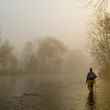
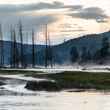





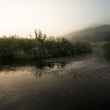





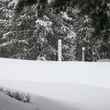



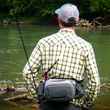
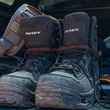



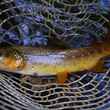
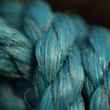

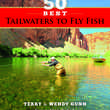
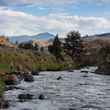
Comments
Rob Goodwin replied on Permalink
For fishing western rivers such as the Deschutes, I would add the elk wing caddis as a additional dry fly pattern..
Chip Bolman replied on Permalink
It can’t be this simple. I have wasted so much time, searching through disorganized fly boxes, energy, carrying every fly in my armamentarium at all times, and mental angst, searching for the ‘perfect’ fly that it defies belief. This year, I will simplify- really!
Pages